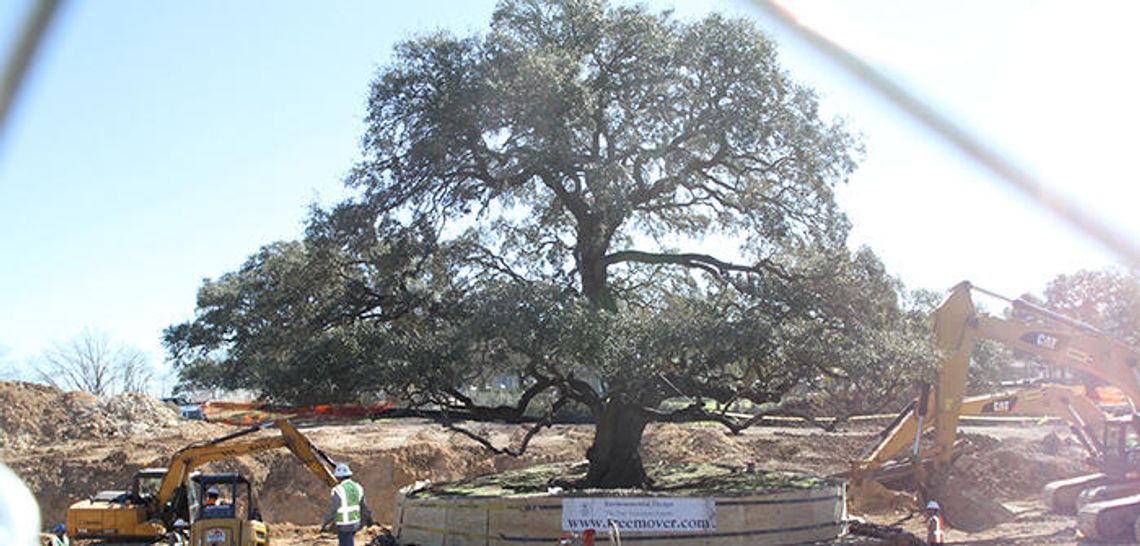A $300,000-plus relocation of a 250-year-old heritage tree on Buda’s new municipal building site has so far been successful, according to city officials.
Jon Hillis, a representative with Environmental Design, the company contracted to move the 53-inch-wide heritage tree, said the tree is “stable and has good new growth on all the branches.”
Hillis, who has been in the tree relocating industry for 20 years, said the appearance of the tree has changed over the last few months due to crews removing dead wood from the canopy, as well as removal of sporadic construction dust and ball moss.
Hillis said normally a tree follows seasons of various growth; most trees experience root growth in the fall and canopy growth in the spring. In Texas, a tree can grow its root system all year round due to the temperature of the soil.
“Ideally the tree will require much less monitoring and maintenance after another couple of growing seasons (years),” Hillis said.
Hillis said when a tree undergoes transplantation it can experience something called “transplant shock,” where it goes through stages of reintegration with the soil and the root system.
“From tree to tree the amount of shock can differ, some go through more stress than others,” Hillis said.
Crews have been monitoring the tree ever since the tree was methodically moved in the early part of 2017. The move came after Buda city officials voted in September 2016 to move the 53-inch wide heritage oak after it was found the tree was in the blueprint of the new city hall and library.
Hillis said currently crews with Environmental Design are monitoring the tree on a biweekly basis. The crews are performing various maintenance tasks like treating the tree preventatively for bugs, changing the irrigation systems based on the tree’s needs and adding mulch as needed.
Hillis said the level of transplant shock experienced by the municipal heritage tree was normal for larger trees. He said crews did everything they could during the moving process to keep the 800,000 pound root ball from overly shifting in transit.
“My experience tells me this tree, based on its condition after transplant, tells me it’s healthy and needs continued monitoring to be maintained properly for the future life of the tree,” Hillis said.











